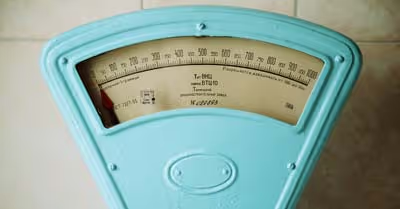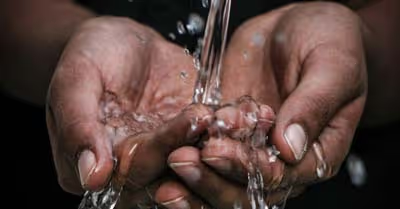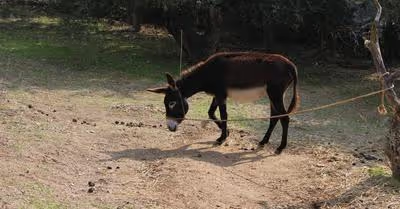Table of Contents
How Much Does a Baseball Weigh?
According to current requirements, baseballs should weigh roughly 5 ounces or around 150 grams. It will be hard to tell the difference in most circumstances, but some factors have an effect on the overall weight of the baseball.
What about the weight of a Little League baseball? They are, as predicted, relatively light because they are designed for smaller players who have less energy and power than adults. The typical weight of a baseball for young players is between 4 and 5 ounces. It's also worth noting that while there are several sorts of baseball, their weights are all within the same range.
To find out the weight of a baseball, you must first get familiar with how a baseball is made. Let's talk about its anatomy, which will help us comprehend why it weighs so much. Even though various manufacturers have distinct designs and improvements, the structure is nearly the same.
The core, yarn, and case are the three primary components of a baseball, with the cork being the most common substance found in the core (or center) of the baseball. The yarn is then wrapped around the core, which is made from a blend of cotton, polyester, and wool. The leather shell, which encases the two other pieces, is the last component. A baseball also has 216 stitches on it.
While leather is the most popular material for the external casing, vinyl or other synthetic casings are also used – this depends on the manufacturer. These materials may have an influence on how the ball feels in your hand, but they have minimal effect on its total weight. Nonetheless, they will be within the weight range specified above.
MLB baseballs include a rubber-coated cork core wrapped in thick layers of yarn. The ball's outside shell is composed of cowhide or horsehide and is encircled by 108 double stitches. Surprisingly, everything is done by hand. Though a tremendous amount of effort was put into automating the baseball production process, it ultimately failed. It's worth mentioning that the yarn and pattern materials employed have an impact on the ball's aerodynamics.
Baseball has altered and evolved over time in response to the developments in the sport. Science affected the creation of baseballs, influencing key features and intricacies all the way down to the stitching. To grasp how the baseball has evolved over time, it's necessary to understand how early balls differed, dating back to the eighteenth century.
Dead Ball Era
Each player fashioned his or her own ball in the early days of baseball. Because player-made balls were "dead" or overly soft, it was dubbed the "dead ball" period. Because various players used different balls, each one pitched differently.
The hitters suffer from a severe headache as a result of the various balls! It was difficult to hit the balls accurately since they all went in unexpected directions. All of that changed in 1876, thanks to the efforts of a single pitcher.
A pitcher called A.G.Spalding created a rubber-cored ball that the National League approved for use in official games. The dead-ball age had come to an end, and the future had begun. Fun fact: during the early years, a single baseball was sometimes used for the entire game. That's unheard of in the modern era.
Players didn't change the ball till it came apart. The ball became more difficult to strike as it became dirtier. Between 1901 and 1910, this resulted in a reduced run rate. The center of the ball was unchanged since it was still made up of a cushioned cork pill surrounded by two layers of rubber.
Live Ball Era
The Live Ball Era began in 1920 when Mr. Spalding began using Australian wool to cover the baseball cores. The new ball shifted the balance of power to the hitters. The following games saw a minor rise in hits and home runs, which was the start of a more offensive game. In addition, new laws prohibiting spitballing were implemented, working against pitchers. The baseballs started to be replaced during games as they got dirtier and softer. The American and National Leagues agreed to standardize the ball manufacturing process in 1934.
A cushion cork core is encased in a layer of black rubber, which is covered by a coating of red rubber. The yarn was then supplemented with 71 yards of blue-gray woolen, resulting in a ball that measured 7 3/4 inches in circumference and weighed 3 1/8 ounces. The following wrapping was 41 yards of white, bringing the circumference and weight to 8 1/4 inches and 3 7/8 ounces, respectively.
The tanned horsehide cover, which weighs 1/3 ounce and is 5/100 of an inch thick, is even more intriguing. The size of a completed ball was similar to that of modern-day balls, ranging from 5 ounces to 5 and one-eighth ounces.
World War II
Baseball players were among those who suffered greatly during World War II. During the war, many renowned figures were recruited into the army. Along with the participants, the game and its ball were also harmed. Rubber was an important substance throughout the war for a variety of reasons. It was used in the production of weapons and other items. As a result, new materials had to be used in the manufacturing of a baseball ball.
Baseballs were subsequently created with a substance called "balata" after some trial and error, and the core of the ball was modified to a granulated center. Baseball had several adjustments throughout the war years. Synthetic materials, such as synthetic rubber, were being manufactured in 1944. This was then employed in the production of baseballs.
Present Era
Since then, not much has changed in the baseball world. A remark from a 1958 report is eerily similar to the one described above (with slight differences). Baseballs in the major leagues begin with a cork core with a little bit of rubber. A coating of black rubber is applied first, followed by a layer of red rubber. It's then ready for the winding procedure, which involves wrapping yarn around the core. This is done on a spinning machine in a humidified, temperature-controlled environment.
Around 121 yards of rough gray wool, 45 yards of white wool, 53 yards of fine gray wool, and ultimately 150 yards of fine white cotton make up the yarn windings. The sphere is then covered with rubber cement once these layers have been placed. The ball is then covered with two pieces of horsehide sewn together with crimson thread in the shape of an "8."
The cover of each ball includes 108 hand-stitched double threads. A completed ball should weigh between 5 and 5 1/4 ounces and measure between 9 and 9 1/4 inches in diameter.
Recent Articles
















